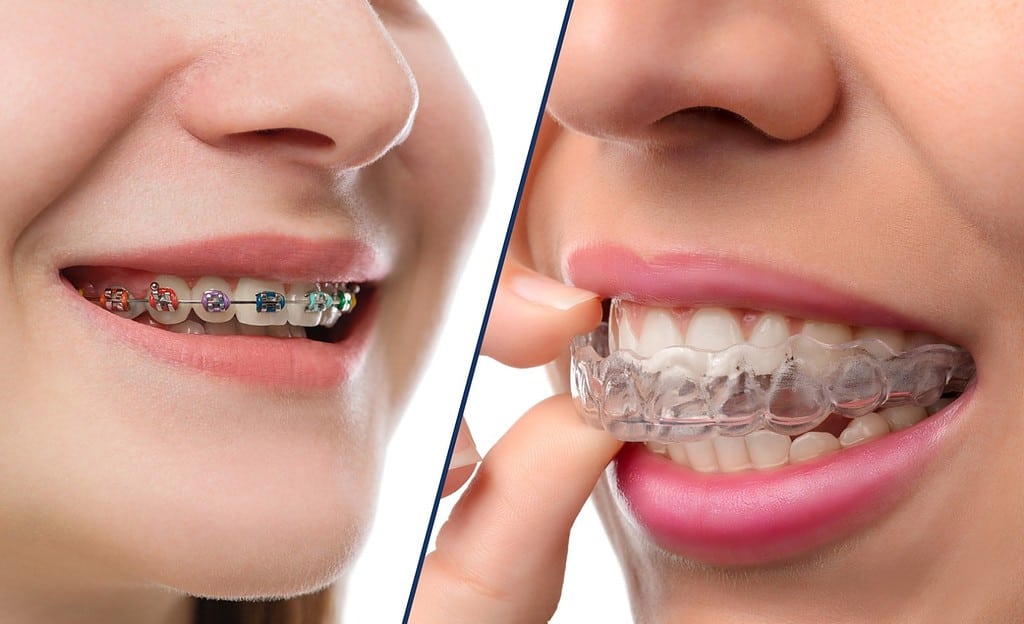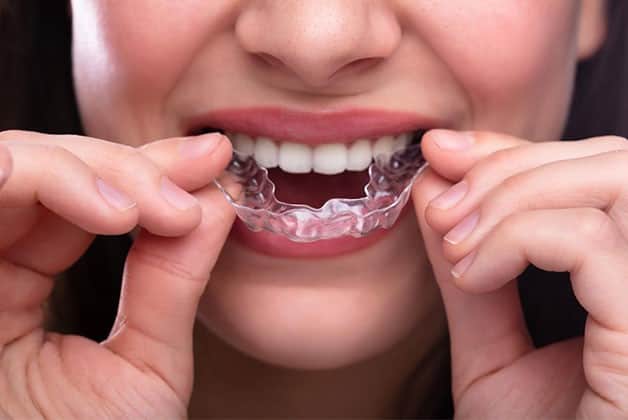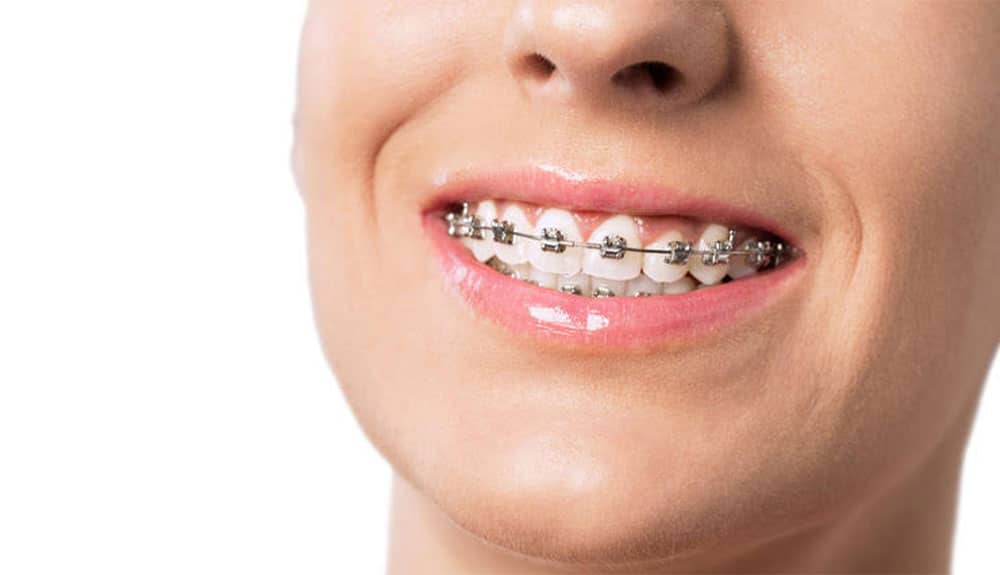ot isalign vs Braces is one long-going debate that never seems to end. if you are looking for a way to improve your smile and boost your confidence too, chances are that you are also asking which of these options you should go.
Well, whether for adults or teens, both Invisalign and metal braces are effective for improving smile. They both work to shift your teeth into the proper position while ensuring the proper functioning of the teeth.
However, each treatment has its unique benefits and challenges, hence making people ask which is better for achieving a great smile. Well, there are many factors to consider before you decide which is best for you.
Let’s take a quick look at how the treatments are similar and what factors set them apart. Then, you can decide which is best for you based on their differences. Itching to know the resolution to the debate Invisalign vs Braces? Keep reading!
How Are They Similar?
Metal braces and Invisalign treatments are similar in many ways, even though they look and feel different. Both of them are used to correct crooked teeth, treat underbites and overbites, and reposition the jaw.
Both of them must be worn all day, but Invisalign trays need to be removed when it’s time to eat. Both of them require a commitment to follow instructions regarding cleaning and oral health.
Invisalign vs Braces: How Are They Different?
There are a couple of ways the treatments differ from each other. But the major difference lies in the technique they use to shift teeth and create a beautiful smile.
Braces use metal brackets and high-tech wires to shift the positions of the teeth. The method often involves the use of elastics to align the teeth.
On the other hand, Invisalign uses a series of clear custom aligners to slowly move the teeth. Although Invisalign seems to be more convenient, metal braces may be a better treatment option for some orthodontic issues.
So, How Do You Know Which Is the Best Option for You?
There are a couple of factors to consider before arriving at the answer to this question. Ranging from your budget to your type of orthodontic issue and the level of comfort you want to enjoy, there are just many things to consider in the Invisalign vs braces debate.
So, let’s see some of the factors that differentiate braces and Invisalign treatment.
#1: Appearance
This is one major difference between the two treatments, and Invisalign will always have an upper hand here. While metal braces are more noticeable in the mouth, Invisalign is virtually undetectable. Braces are metal, Invisalign trays are made from a clear plastic material which makes them almost invisible in the mouth when used.
So, if you would prefer to have your alignment treatment without people noticing it, Invisalign will be your best option.
#2: Effectiveness
For years, braces have been used as an effective treatment option for crooked teeth. This method works well because it cannot be removed by the patient – it has to be worn every time of the day. But for Invisalign, the trays are removable, which makes it a less effective option compared to traditional braces.
Most times, Invisalign patients don’t comply with the recommended amount of time they should wear the trays. And those times when you are not wearing your trays, the teeth tend to shift, making treatment time lengthened than normal.
At the same time, traditional braces tend to be more effective for some orthodontic cases where the teeth are severely misaligned. So before you opt for any of these options, always check with your doctor to help with the decision. If your teeth are severely misaligned, you may need to go for traditional braces.
If your work will also require you to be removing the aligner trays every time (Invisalign can affect your speech, especially during the first few weeks), traditional braces might also be a better option for you.
#3: Costs
Cost is arguably another important factor to consider when looking at the difference between braces and Invisalign. Not everyone can afford Invisalign treatment – they can be very expensive. Aligners can cost between $1,000 to $5,000, and the number of aligner trays you use will depend on the severity of the changes your teeth need.
However, braces seem to be a more affordable option. It generally costs between $2,500 and $8,000. But it is a one-time treatment. You don’t need many wire brackets like in Invisalign.
Nevertheless, it is important to note that not all insurance plans cover Invisalign because it is most times seen as a cosmetic treatment. So you may need to check with your insurance provider to know if they can offer coverage for your treatment.
#4: Comfort
The truth is that both treatments come with a level of pain when the teeth start to shift. But putting them side by side, Invisalign seems to be more comfortable than traditional braces because it applies less pressure to the teeth overall.
Sometimes, braces can also have sharp edges that can cut the tongue or the inner lips. So if you or your child is an active sportsperson, traditional braces may pose more risk than Invisalign.
#5: Commitment to care and cleaning
Traditional braces require less commitment in terms of cleaning and taking care of your teeth. It allows you to brush and floss your teeth just in the normal way you have been doing it even before the braces. So cleaning process seems to be more convenient with braces.
On the other hand, asides from the normal brushing and flossing, there are more effort required to keep the Invisalign trays clean. You will need to clean them each time you eat so bacteria or solid food don’t build up in the crevices. Cleaning and maintaining Invisalign trays may not be very convenient, especially if you are away from home.
#6: Convenience
Both treatments have their downsides when it comes to convenience. Traditional braces may seem like they are more convenient because you won’t have to be taking them out or cleaning them after every meal, they can prevent you from eating your favorite foods. With braces, you cannot eat any type of food – and that can be annoying.
As for Invisalign, it is usually more convenient because it allows you to eat any type of food – you only need to take them out before eating. But the stress of having to remove the trays and storing them securely before every meal is something to consider. You definitely don’t want to misplace your Invisalign tray.
#7: Follow-up treatment
Regardless of which of them you use, you will always need regular appointments with your dentist or orthodontist. This can be about once a month for traditional braces and every 4 to 6 weeks for Invisalign.
Also, after treatment is complete, braces may require that you wear a retainer of some kind to make sure the teeth remain in the new position. Invisalign also requires that you wear a tray at night even after the treatment is complete.
Final Note on Invisalign vs Braces
The Invisalign vs braces debate has been an age-long one. But while there are a few similarities between the two treatments, there are also some differences that set them apart. Traditional braces are metal while Invisalign is made from a clear plastic material. Therefore, Invisalign is a more discrete treatment option than braces.
Invisalign is more expensive but also more convenient and comfortable. However, it cannot address all types of orthodontic issues. In cases where there is a severe teeth misalignment, you may need to go for traditional braces.
Therefore, before you choose any of the options, make sure you consult your doctor and carefully weigh all the pros and cons associated with each of them. But regardless of which of the methods you go for, you can be sure of achieving a great smile afterward.



